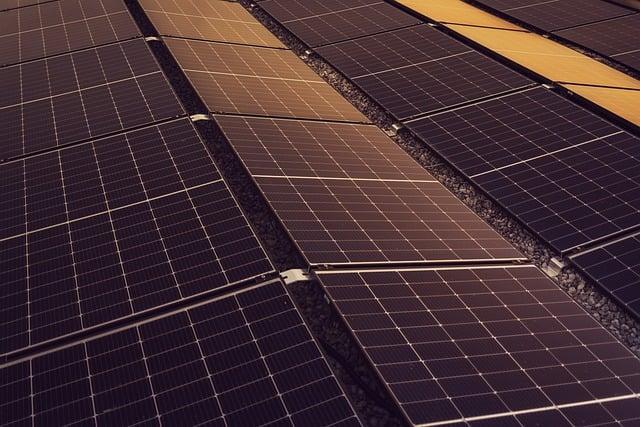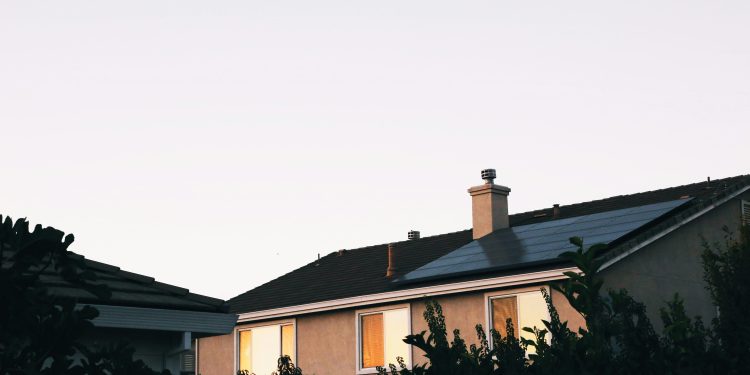In the ever-evolving landscape of renewable energy, solar panels stand as a beacon of innovation and sustainability. Yet, as they silently harness the sun’s rays in industrial environments, questions about their longevity quietly linger in the shadows. Industrial settings, with their unique blend of challenges—ranging from dust-laden air to the relentless hum of machinery—pose distinct conditions that can influence the lifespan of these technological marvels. This article delves into the intricate dance between solar panels and their industrial habitats, exploring the factors that dictate their endurance and the innovations striving to extend their life under the sun. Join us as we illuminate the path of solar panels in the bustling world of industry, uncovering the secrets to their resilience and the future of their sustainability.
Maximizing Durability: Understanding Solar Panel Lifespan in Industrial Settings
In industrial settings, the lifespan of solar panels is influenced by a variety of factors that differ from residential environments. Environmental conditions play a significant role; exposure to extreme temperatures, heavy winds, and dust can affect the longevity of the panels. To ensure maximum durability, it’s crucial to consider the quality of materials used in manufacturing and the robustness of the installation process. Regular maintenance, including cleaning and inspections, can mitigate the impact of environmental wear and tear, thereby extending the operational life of the panels.
- Quality of Materials: High-grade materials are more resistant to harsh conditions.
- Installation: Proper mounting and angling can reduce stress and wear.
- Maintenance: Routine checks and cleaning prevent efficiency loss.
- Monitoring: Use of advanced monitoring systems to detect issues early.
Additionally, leveraging advanced technologies such as anti-reflective coatings and bifacial designs can further enhance panel performance and durability. By understanding these critical factors and implementing proactive strategies, industries can significantly optimize the lifespan of their solar investments, ensuring long-term sustainability and cost-effectiveness.

Environmental Factors and Their Impact on Solar Panel Efficiency
In the ever-evolving industrial landscapes, solar panels are subjected to a variety of environmental factors that can significantly influence their efficiency and longevity. Dust accumulation, for instance, is a prevalent issue in many industrial settings. Fine particles from manufacturing processes can settle on solar panels, obstructing sunlight and reducing energy output. Regular cleaning and maintenance are essential to mitigate this effect, ensuring optimal performance over time.
Another critical factor is temperature fluctuations. Extreme heat or cold can lead to thermal expansion and contraction of solar panel materials, potentially causing micro-cracks that impair their function. Industrial environments often experience such variations, making it crucial to choose panels with robust thermal tolerance. Furthermore, chemical exposure from nearby industrial processes can lead to corrosion or degradation of panel surfaces, further impacting their efficiency. Implementing protective coatings and ensuring adequate spacing from sources of chemical emissions can help in preserving the panels’ integrity.
- Dust Accumulation: Regular cleaning is essential.
- Temperature Fluctuations: Opt for panels with high thermal tolerance.
- Chemical Exposure: Use protective coatings and maintain safe distances.

Innovative Maintenance Strategies for Prolonging Solar Panel Life
In industrial environments, where solar panels are exposed to harsh conditions, adopting innovative maintenance strategies is crucial for maximizing their lifespan. A proactive approach can significantly enhance the durability and performance of solar panels. Consider implementing the following practices:
- Regular Inspections: Schedule routine checks to identify potential issues such as dirt accumulation, physical damage, or shading from nearby structures. Early detection allows for timely interventions, preventing further degradation.
- Advanced Cleaning Techniques: Utilize automated cleaning systems or biodegradable cleaning solutions to efficiently remove dust and debris without damaging the panels. This ensures optimal energy absorption and prolongs the panels’ efficiency.
- Smart Monitoring Systems: Integrate IoT-based sensors to monitor real-time performance and environmental conditions. This data-driven approach facilitates predictive maintenance, allowing for adjustments before significant problems arise.
- Protective Coatings: Apply nanocoatings to enhance resistance against weather elements and pollutants. These coatings can reduce wear and tear, thereby extending the operational life of the panels.
By leveraging these cutting-edge strategies, industries can not only safeguard their investment but also contribute to sustainable energy production with minimal downtime and maintenance costs.

Recommendations for Optimizing Solar Panel Performance in Harsh Environments
Industrial environments present unique challenges for solar panels, often exposing them to extreme temperatures, dust, and mechanical stress. To ensure optimal performance, consider the following strategies:
- Regular Cleaning: Dust and debris accumulation can significantly reduce efficiency. Implement a routine cleaning schedule, using non-abrasive materials to prevent surface damage.
- Protective Coatings: Apply anti-reflective and anti-soiling coatings to enhance light absorption and minimize dirt buildup.
- Robust Mounting Systems: Ensure panels are securely mounted to withstand strong winds and vibrations common in industrial settings.
- Temperature Management: Utilize passive cooling techniques, such as ventilated panel backs or heat-dissipating materials, to manage heat and maintain efficiency.
By integrating these practices, solar panels can maintain high performance and extend their lifespan even under the challenging conditions of industrial environments.
Concluding Remarks
In the grand tapestry of industrial evolution, solar panels have woven themselves into a narrative of sustainability and innovation. As we’ve journeyed through the intricacies of their lifespan in industrial environments, it becomes clear that these silent sentinels of energy are both resilient and complex. They stand as testaments to human ingenuity, capturing the sun’s relentless power to fuel our ambitions.
Yet, their journey doesn’t end here. As technology advances and maintenance practices evolve, the lifespan of solar panels will continue to extend, offering even greater returns on investment. In these industrial landscapes, where the hum of machinery meets the whisper of the wind, solar panels are not just components—they are catalysts for change, heralding a future where clean energy is not merely a possibility, but a promise.
As we close this chapter, let us look to the horizon, where innovation meets the enduring light of the sun, and consider the endless possibilities that await. The story of solar panels in industrial environments is far from over; it is, in many ways, just beginning.

































